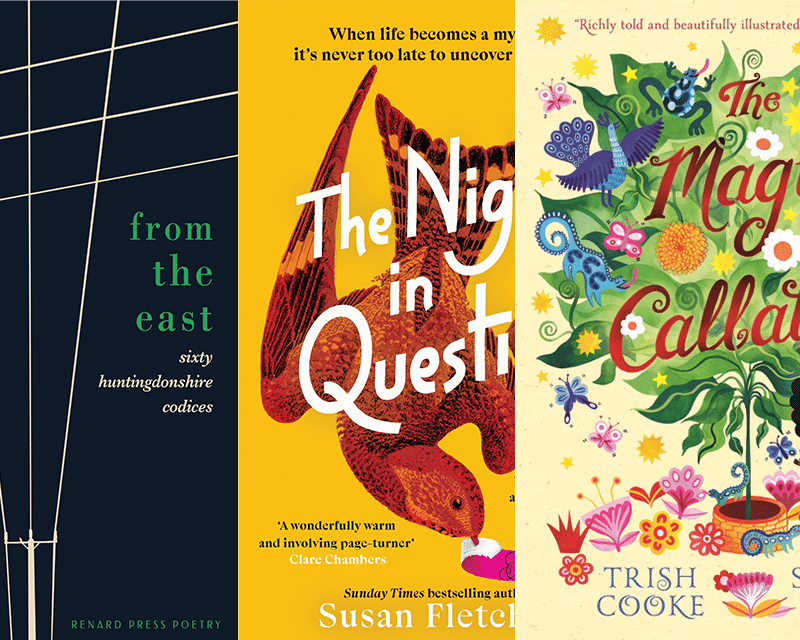- Collected
- Article
All At Sea
Pirate Tales

- 5 March, 2018
- Roy Bainton
As Hugh Laurie observed: ‘Screenwriting is the most prized of all the cinematic arts. Actually, it isn’t, but it should be.’ As a literary ‘Jack of all trades’ I always boasted to myself that I could tackle any genre: fiction, poetry, radio, journalism…but after a few salutary lessons, I realised that my versatility was a figment of my imagination. Nothing has illustrated this fact more than my dismal attempts to fulfil my greatest ambition: to write a feature-film screenplay.
As an ex-merchant sailor, I wanted my film to be about the sea. Fortunately, a writer friend, Mark Chamberlain, suggested we cooperated on the true story of Captain William Kidd (1654–1701). Kidd was a skilled seaman who had served both as a privateer and with pirates, but after marrying a rich widow in New York he settled for a more urbane life, and even supplied ropes and block-and-tackle equipment for the building of Trinity Church. Unable to resist the call of the sea, he was offered a chance by the City’s Governor, Lord Bellomont, who was part of a cartel of rich English investors, to patrol the Indian Ocean and attack pirates who were causing grief for the East India Company.
In this brief extract Kidd is spending his last night ashore with his wife Sarah, before embarking on his fateful voyage as a privateer. Sarah has a sense of foreboding about the whole project and his commission by the King to act as a pirate hunter, especially as he has recruited her young brother, Sam Bradley, to join his villainous crew.
INT. NIGHT; NEW YORK; KIDD’s BEDROOM. KIDD The only light in the room is from the moon; it cuts a blue swathe across the passion-ruffled bedding. KIDD appears to be dozing; SARAH looks at him. Somewhere outside, a nightingale, sings. SARAH Tell them to find another captain. KIDD I have signed the King’s papers. I am committed. SARAH Let the king go to hell! You made a holy vow to me! Forget the sea, William. We need you here. I love you... SARAH kisses him. He is impassive. KIDD Forget the sea...hah. SARAH (angrily) Then if you’ll not forget the damned sea at least prevent my brother from following your career! Sam’s too young! KIDD You can’t stop him. He’s a man already. Besides...he’ll always remind me of you... SARAH lays her head on KIDD’s chest. She looks sad. SARAH Then come home quickly. KIDD Forget the sea...? God damn it… I am the sea...
Kidd was supplied with a new vessel, The Adventure galley, but recruited a cantankerous crew of sailors whose mutinous behaviour eventually drove Kidd to the very piracy he was sent to tackle. Whilst near the coast of Malabar he struck his gunner, William Moore, with a bucket and killed him. After hijacking an Armenian vessel, Quedagh Merchant, the hunter became the hunted. On his eventual return to New York, Kidd was arrested and shipped to London, and after a dramatic trial, he was hanged for murder and piracy on 23 May 1701, at Execution Dock, Wapping.
We studied everything we could find on Kidd. We drank in the Captain Kidd pub, examined documents in the Public Record office and the Maritime Museum in Greenwich. We soon came to know William Kidd, a forty-something Scot from Dundee, like a close relative.
By the autumn of 1999 we had the first draft of our script, simply titled ‘Kidd!’ We submitted it to various production companies. The usual wall of silence ensued, until Penumbra Productions, an award-winning documentary company, expressed keen interest. Penumbra’s director, ‘Naz’ Nazareth, invited me to London to talk about taking an option on ‘Kidd!’ Very few virgin screenwriters could get a break like this. In order to allow Penumbra to seek potential backers we optioned the script to them for £1.
Penumbra ‘talked up’ our script to anyone who might listen. Exciting names came up. John Mackenzie, the director of The Long Good Friday; Stephen Frears. Nothing happened, so we decided to approach a star direct to see if the role of Kidd might appeal. The one portrait of him hanging in Wapping left us in no doubt who might fit the part: Billy Connolly.
Connolly had already commented that every Scots actor who could stand on two feet – except him – had been hired for Mel Gibson’s Braveheart. So to play a legendary Scottish sea captain and pirate might make amends. Connolly was touring and was booked to play the Hammersmith Odeon. We decided that we’d go around to the stage door, and press our screenplay into his hands.
He was far more accommodating than we had dared hope. We described the film, how we saw Kidd. He asked us ‘Does it have those big sixteenth-century lacy cuffs sticking out of the sleeves?’ We said it did. ‘And big tall boots?’ Yes. ‘I love it!’ The whole experience was like a dream as we parted, with Billy clutching our precious script. It had been a productive night.
Weeks later Connolly’s management said they weren’t interested. Meanwhile, things with Penumbra Productions had fizzled out, too. Then we were contacted by the Royal Naval College at Greenwich. They told us that a film conglomerate on America’s eastern seaboard was interested in a TV project about Kidd, and that as May 8, 2001, would be the 300th anniversary of Kidd’s trial, the Naval College intended marking the event by re-staging it in period costume. So we dutifully sent two copies of the script, asking if there was anyone of note involved with the American film group. One name came up: Mel Gibson.
Some weeks later we were informed that our screenplay was not suitable: there were ‘too many swearwords’. It seemed an odd comment on drunken, bloodthirsty, lusty pirates, but we were losing faith by this time. As far as we were aware the re-enactment of Kidd’s trial took place in Greenwich. Later in 2001 we were surprised when a dramatized TV documentary entitled The Quest for Captain Kidd was broadcast. It was narrated by Mel Gibson. We didn’t recognise any of our dialogue.
When Mark and I started on Kidd’s story there was little interest in pirate films. There had been two risible Kidd movies starring Charles Laughton, one in 1945, and a follow up where he meets Abbott and Costello. Then in 2003, the first Pirates of the Caribbean came out with Johnny Depp, and a new multimillion-dollar franchise was launched, with infantile tales of phantoms, ghost vessels and zombie pirates. Set against the increasingly juvenile mood of Hollywood, no one would want an authentic pirate yarn. And so Kidd was sunk.
There is an upside to accepting defeat — that’s the knowledge that at least you tried. Even today Mark and I revisit scenes like this:
We see on the horizon a host of small ships, at the centre of which is Quedagh Merchant, a large, richly decorated vessel that seems to reflect light itself. The Adventure is sailing slowly towards this mass, and we now view it over the shoulders of men on the bow of The Adventure. CUT TO THE ADVENTURE: POOP DECK KIDD turns to WALKER and INCE KIDD This is it. What did I tell you? Have faith, have patience, and all things come about. Mr Ince, have the boys make ready. INCE Not before time, Mr Kidd. There’s mutiny in the air. Is it the full works for this one, sir? KIDD I think the ‘theatrics’ are in order. Quedagh Merchant sailing gracefully through the collection of vessels, their decks quiet, almost still, compared to the frantic preparations for battle aboard The Adventure. We pass small dhows and see their crews at prayer, as KIDD’s men are slugging back rum, checking their pistols and muskets. Reaching the centre of the flotilla, and Quedagh Merchant, KIDD gives a signal and a heavy fusillade cracks the silence as The Adventure fires across the bows of the Quedagh. The Adventure then closes in, all noise, initially, coming from KIDD’s crew and their terrifying intimidating routine. When the Quedagh is close enough, KIDD’s men fire muskets into the air, and leap aboard. The first to swing over is the ‘tar boy’: a man who has had his headgear tarred and set alight. Once across, and having hacked down the first Quedagh man he meets, his head is dowsed by those who come behind. Most of the Quedagh crew are at prayer as the men of The Adventure, their faces hideously painted, run amok. KIDD himself swings across and joins in the slaughter. No man on the Quedagh’s deck is left alive.
Maybe Conrad said it best: ‘The sea has never been friendly to man. At most it has been the accomplice of human restlessness.’
You might also like:
No facts, only versions
Memoirs are as much about what is excluded as what is included. This edition examines how you can evoke the…
RLF Fellows’ News: April 2024
Publishing News RLF Fellow Trish Cooke’s new children’s book, The Magic Callaloo, is set to be published by Walker Books…
Susan Fletcher on outsiders in fiction – literal and imagined
I’ve always known that I’ve preferred to be outside. To be an outsider – literally, and, specifically, amongst wild places…


